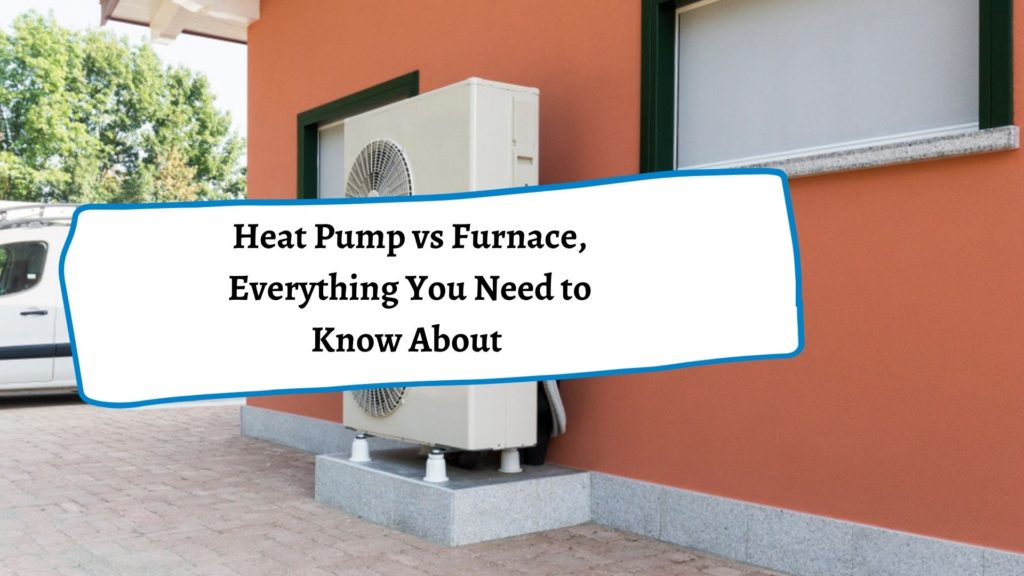Main question for today Heat Pump vs Furnace? We can stay comfortable indoors no matter how hot or cold it is outside thanks to heating and cooling equipment. Either it’s a high-efficiency furnace or a heat pump
The variety of technology available today for heating and cooling equipment is truly amazing. Furnaces that extract nearly 100 percent of heat from fuel and heat pumps are so efficient that typically, 1kW of electrical energy you put in, your heat pump will produce around 4kW of heat energy out. However, there are a few universal constants that apply to all heating and cooling systems. In addition, it’s important to keep these in mind as you weigh your options.
A heat pump is a type of heating and cooling system.
A heat pump has two components: a condenser unit that is typically located outside of a home and produces heating or cooling. Usually, an indoor unit is typically located on a wall and moves hot or cool air into the home. Heat pumps are sometimes referred to as “mini-splits” because the condenser and air handler are separated or “split” by a refrigerant line. Heat pumps have extremely high-efficiency rates and the ability to provide heating and cooling without the use of ductwork in the home.
WHAT ARE HIGH-EFFICIENCY FURNACES?
A high-efficiency gas furnace has AFUE ratings of 90% or higher, up to a maximum of 98.5% AFUE. AFUE stands for Annual Fuel Utilization Efficiency and is a measure of how much heat the furnace can pull from the fuel it consumes. The AFUE of a furnace is determined by measuring the amount of heat in British Thermal Units (BTU) compared to the amount of fuel used during the same time period.
How Heat Pump Perform When the Temperature Is Low
When heat pumps fail to function properly, many Edmonton residents turn to their backup heating systems for warmth. A backup heating system is a type of heating system that is installed to be used when heat pumps are not providing optimal energy efficiency.
Investing in a backup heating system is a wise decision for Edmonton residents who do not want to risk high electricity bills due to heat pumps that struggle in the cold. There are several system configurations available.
What the Solution When It’s Too Cold to Operate Heat Pump
Electric resistance heating can be added to your home by incorporating heat strips into your HVAC system. Heat strips are used for heating when heat pumps fail to perform effectively in cold weather. They aren’t the most energy-efficient option, but at low temperatures, they outperform heat pumps. If you don’t have access to natural gas energy at your home, this could be a good backup heating option for you.
During cold days when heat pumps struggle, gas furnaces provide efficient heating. A gas furnace is likely your most efficient backup heating option if your home has natural gas connections. Gas furnaces are more expensive to buy and install than heat strips, but they provide more efficient and reliable heating.
Heat pumps do, in fact, save you money on your energy bills.
Because a heat pump only uses electricity for power rather than heat generation, it has an astonishingly high-efficiency rate. When using traditional resistive electric heat, such as electric baseboard or space heaters, the amount of heat produced is proportional to the amount of electricity consumed: one unit of heat per unit of electricity for 100 percent efficiency. This means lower electricity bills for a more comfortable home – heat pumps are very cheap to operate, increasing your electric bill by an average of $75 monthly per heat pump that is constantly running in the home. Furthermore, heat pumps will help to reduce the carbon footprint of your home.
MAINTENANCE AND LIFESPAN
Heat Pump vs Furnace. Properly maintained furnaces can last for 20 years or more. A heat pump, like an air conditioner, typically has a 15-year lifespan. Because the heating elements of a gas-powered furnace are only used for a few months of the year, their maintenance requirements are lower than those of a heat pump. A gas-fired furnace also has fewer mechanical parts than a heat pump, which means there are fewer things that can go wrong.

Trust Vese With All Your Heat Pump or Furnace Needs
So Heat Pump vs Furnace? At Vese, we pride ourselves on finding the heating, cooling, and ventilation solutions that are right for you. If you’d like to learn more about heat pumps or are ready to install one at your home,
Contact us to learn more about the installation of backup heating options to provide your household with reliable heating, no matter how cold it is outside!

